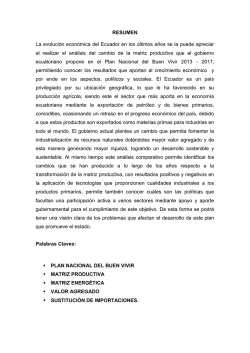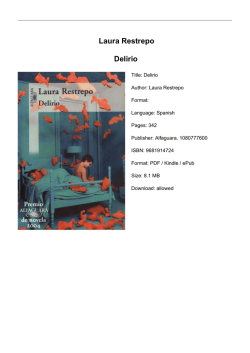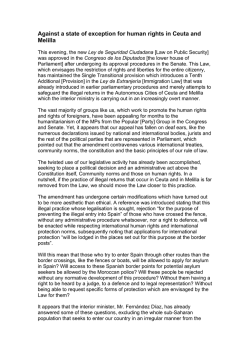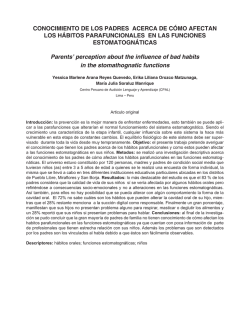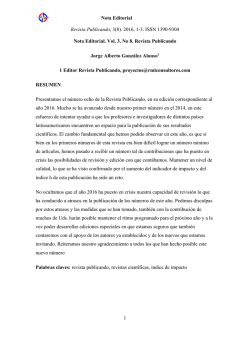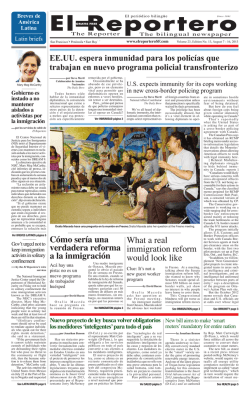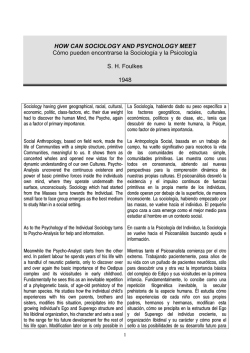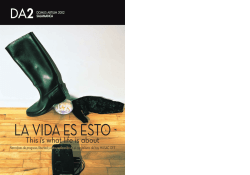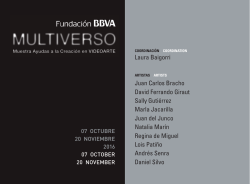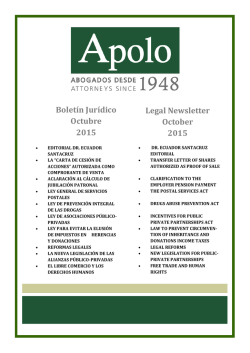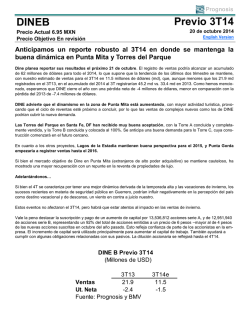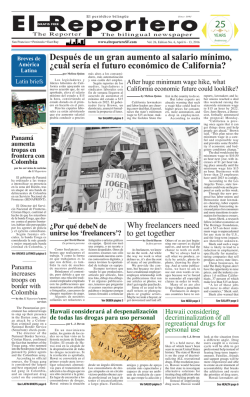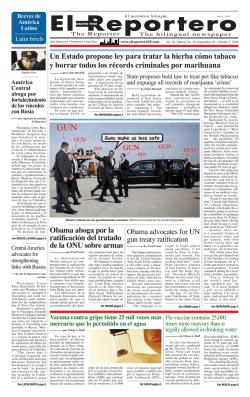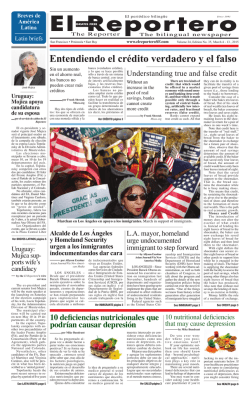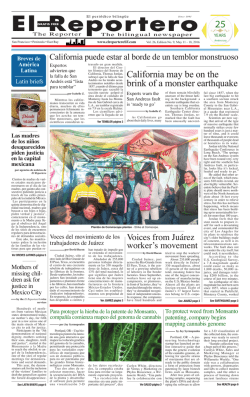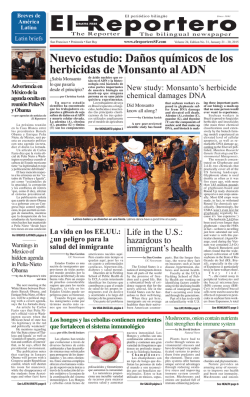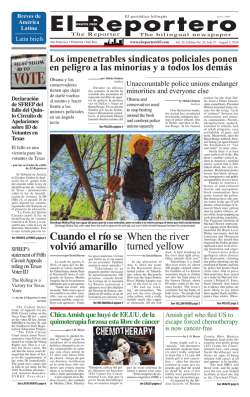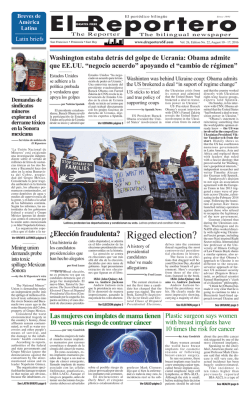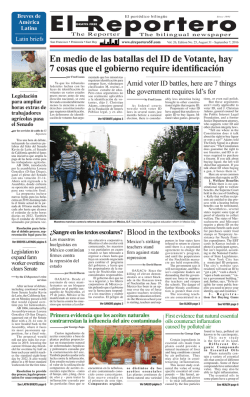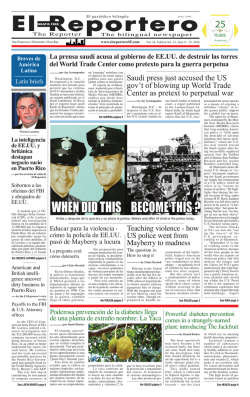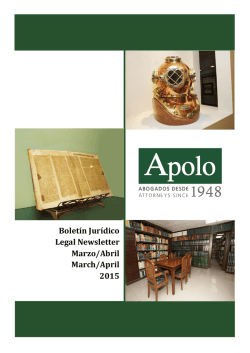
VERTICAL MARIDAJE TRZ.cdr
El pájaro posado en la colina Sobre el edificio T!TSA en Tenerife de NTRES arquitectos (Arsenio Pérez Amara/, Antonio Corona Bosch y Eustaquio Martínez García) Como si fuera un trozo de la misma colina cuyas piedras se hubieran alzado, con un trazado que en su frente se ciñe a las curvas de n ivel de la propia tierra, con su mismo color gris y con su misma fuerza, , 1 el nuevo edificio para las "gua~uas" (autobuses) de Tenerife, el nuevo edificio de TITSA, en la falda del monte de la Esperanza, se muestra como una obra de arquitectura espléndida. Una primera excavación certera del terreno hace que el gran edificio sea capaz de adaptarse casi camaleónicamente a la tierra. En ese hueco se insertan las grandes naves, que se desarrollan según un trazado de trama ortogonal que al llegar al borde delantero se pliega a las curvas de nivel. En su parte trasera, la edificación casi se funde, en la cota más alta de ese podio, con la calle que lo limita, como desapareciendo. Todo él se resuelve con una potente estructura de hormigón armado, que en planta es muy clara y en su sección muestra una forma singular en las vigas a modo de cartelas. Esta estructura es de tal calibre que, una vez levantada, el espacio queda definido perfectamente. Una vez más, la estructura no es sólo un mecanismo de transmisión de cargas, sino que, fundamentalmente, lo es de transmisión del orden del espacio. La gravedad que construye el espacio. Luego los arquitectos comunican todos los diferentes espacios en una inteligente operación de interconexión, abriendo unos sobre otros, lo que hace que podamos hablar de un edificio poroso, y lo llenan de luz. Podríamos decir que es una operación propia del barroco. Con el mismo espíritu con que están a punto de terminar el nuevo Aeropuerto de Tenerife Norte en Los Rodeos. Y al igual que en éste, también aquí plantean un espacio central abierto al cielo, que es atravesado inteligentemente por la desnuda estructura de las vigas de la cubierta, como queriendo subrayar su importancia. La luz que inunda ese interior-exterior -magnífica- es como el compás del tiempo. Para hacer visible ese espacio abren un gran hueco hacia el mar, de manera que la operación es reconocible desde el exterior. Todo un acierto. La luz que construye el tiempo. Se diría que es como una bestia que se hubiera asentado sobre la falda de la montaña, frente al mar, 4 en silencio, como dormida. Pues sobre ella, como si se tratara de la bella y la bestia, los arquitectos colocan una pieza más pequeña y ligera, en contraste con el basamento anterior, que es como una cabeza que mira hacia el mar. Realizada con una estructura y un cerramiento metálicos, más delicados y con acabados perfectos, esta pieza de oficinas está repleta de aciertos en mil detalles de buena arquitectura. Pero sobre todos ellos, el acierto básico es la idea principal de situar una cabeza frente al océano Atlántico y de realizarla con extremada delicadeza, en contraste con el potente basamento. Lo tectónico sobre lo estereotómico. Como un pájaro posado en la colina. Estos días, en Roma, pienso en cómo rematar este texto sobre los arquitectos canarios. Y aquí, en las Termas de Caracalla, esta tarde gris luminosa de un sábado de junio, con el sol poniéndose, las gaviotas de Roma gritan a coro, a la hora en que los pájaros se recogen, con un sonido que genera una música espeluznantemente bella. Y ante estos fantasmas imperiales, recordaba el edificio de Tenerife como uno de aquellos pájaros posados sobre las rotundas trazas de las estructuras cuasi romanas con las que nuestros arquitectos han coronado la colina que protege la montaña del Taco. Con la universalidad de la belleza profunda. ALBERTO cÁMPO BAEZA Roma, junio de 2002 5 The bird perched on the hill On the TITSA building in Tenerife, by NTRES arquitectos (Arsenio Pérez Amoral, Antonio Corona Bosch and Eustaquio Martínez García) As though it were part of the hill itself whose stones had risen, with an outline that follows the contours of the very earth, +ith the same grey colour and the same force, the building for the guaguas or buses of Tenerife, the new TITSA building, on the slope of the mountain of La Esperanza, presents itself as a work of splendid architecture. A well-placed initial excavation on the site enables this great building to adapt almost chameleonically to the land. This hollow accommodates large bays laid out according toan orthogonal grid which, upon engaging with the front of the site, folds to adapt to the contours. To the rear, the building almost merges at the high point of the podium with the street that bounds it, practically disappearing. The whole comes together in a powerful structure of reinforced concrete, with a clearly laid-out floor plan and a section that draws out singular forms with its panel-like beams. This structure is of such calibre that, once erected, the space is perfectly defined. Once again, rather than being solely a mechanism for the transmission of loads, the structure is fundamentally a device for the transmission of the order of space: gravity constructing space. The architects then communicate the various spaces in an intelligent operation of interconnection, opening into the next, creating a porous building and filling it with light. We might say that it is an operation characteristic of the baroque, in the same spirit in which they are about to complete the new Tenerife North airport at Los Rodeos. And here, as there, they have designed a central space that is open to the sky, that is crossed intelligently by the bare structure of the roof beams, as though seeking to underline its importance. The light that inundates this interior-exterior - magnificent - is like the rhythm of time. In order to make this space visible, they practise a large opening overlooking the sea, thereby producing an operation that is recognisable from the exterior. The perfect decision: light constructing time. 6 You might say that it is like a great beast that has la in down on the mountainside, overlooking the sea, in silence, as though slumbering. Then atop it, like beauty and the beast, the architects place a smaller, lighter piece in contrast with the plinth, like a head looking out to sea. Constructed with a more delicate metal structure and facing, and with perfect finishes, this office piece is replete with judicious solutions in a thousand details of good architecture. But the most judicious of ali is the principal idea of placing a head overlooking the Atlantic Ocean and constructing it with extreme delicacy to contrast with the powerful podium. The tectonic on the stereotomic. Like a bird perched on the hill. Now, in Rome, 1 am thinking how to finish off this text about the Canarian architects. And here, at the Baths of Caracalla, on this luminous grey evening on a Saturday in Ju ne, as the sun is going down, the gulls of Rome cry out in chorus at the hour at which birds retire, with a sound that makes a chillingly beautiful music. And faced with these imperial phantasms, 1 think of the building in Tenerife as one of those birds perched on the firm traces of the almost Roman structures with which our architects have crowned the hill that protects the mountain of El Taco. With the universality of profound beauty. ALBERT o eA M p o B A Ez A Rome, Ju ne 2002 7
© Copyright 2025
